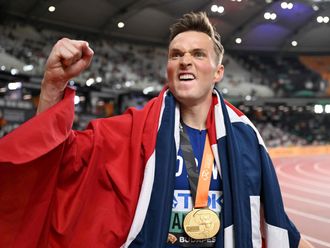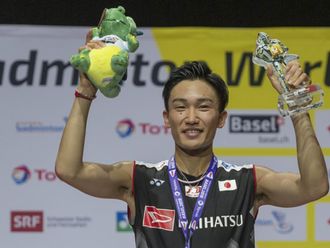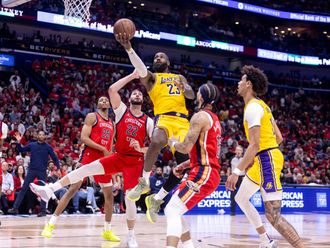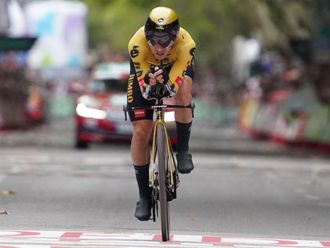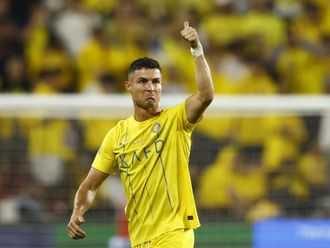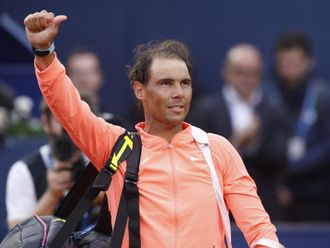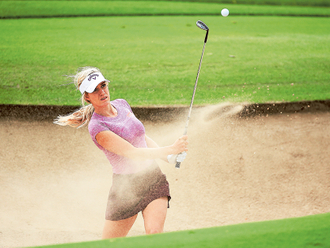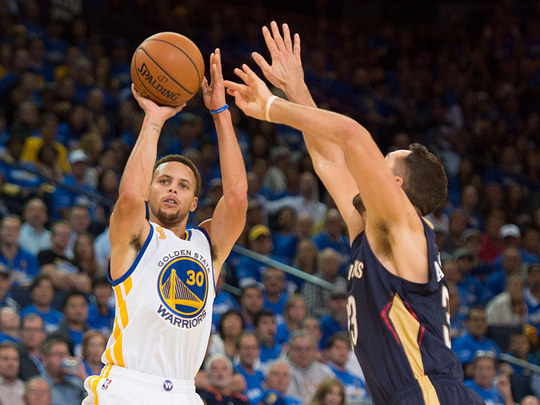
Grab your umbrellas because it’s about to start raining three-pointers in NBA arenas this season.
The world’s best basketball league is back. And if you thought your team took a lot of long-range shots last season, you’ve seen nothing yet.
NBA teams attempted an average of 23.1 threes per game over the last campaign. That total was up from 22.4 in 2013-14, 21.5 in 2012-13 and 18.4 in the lockout-shortened 2011-12 campaign.
The 1,838 three-point tries averaged by each NBA team set a league record – and one that will soon be shattered.
In more than 90 NBA pre-season games in October, teams shot more than 25 threes per game. Three days into the regular season, clubs were putting up 27 shots from distance.
Of course, pre-season is little more than a laboratory for analytical mad scientists to try out new strategies that might narrow the gap between challenger and champion.
But it’s not just numbers that suggest we will see an all-time high for long range bombs this season. More teams than ever are embracing ‘small ball’ line-ups with four shooters and a single big man operating near the basket.
Now we have skinny swingman Paul George manning the power forward position for the Indiana Pacers, a strategy that will space the floor and create mismatches both good and bad for his team.
Kris Humphries, the former rebounding role player (and yes, ex-Kardashian spouse), is now displaying previously unseen three-point range, and it’s earned him a spot as a ‘stretch-four’ in the Washington Wizards’ starting line-up.
And Sacramento Kings centre DeMarcus Cousins, an interior beast, jacked 10 triples in his team’s six-game pre-season campaign. He made just one of them.
These are extreme examples, but the curve is real – and as the season goes on, it will only get more curvy.
NBA attacks have been gradually swapping their sledgehammers for sniper rifles since the early 2000s. No longer are 7ft monsters such as Shaquille O’Neal the focus of the best offensive strategies. Instead, successful coaches produce more nuanced schemes centred on moving the ball and finding open long-range shooters.
“It makes sense, right?” said Steve Clifford, head coach of Charlotte Hornets, who took Frank Kaminsky, a 7ft centre with range past the arc, with the ninth pick in the 2015 NBA Draft. “It creates spacing, which opens up things for everybody else. You have got to be able to shoot threes. We’re going to try to play four-out a lot more.”
It certainly does make sense, Steve. Teams shot 48.5 per cent on two-point attempts and 35 per cent on threes in 2014-15. That means each two-point attempt is worth 0.97 points, while each three-point attempt is worth 1.05 points. It’s simple maths.
The Hornets finished 24th in the league in three-point tries last season. Of the five teams that shot the most threes last season, four went on to contest the NBA Conference Finals. Only the Houston Rockets attempted more than the eventual title-winners, the Golden State Warriors, who bombed their way to the title with an NBA Finals record of 67 made threes.
The Warriors were led by the peerless shooting of star point guard Stephen Curry, who broke the record for most makes from behind the arc with 646. That word ‘peerless’ is not hyperbole – Curry is the best shooter the league has ever seen. No one has even been able to warp defences with the mere suggestion of a shot attempt. He is a threat to almost the half-court line and is history’s quickest draw off the dribble.
Not every team has a Curry, but with funky new line-ups and trigger-happy tactics, teams will do their best to replicate some of the success of the newly minted NBA champions.
This record was made to be broken.


